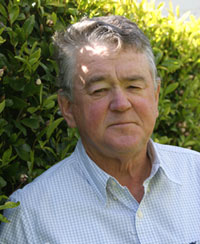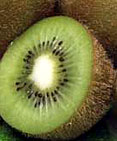
Then I moved into exporting Onions In 1983, I established John Molloy Export Ltd, to focus upon the export of onions.
Up to this time the onion industry was very significantly dependent upon the Japanese market.
In 1984 there was a severe snow storm in Hokkaido, Japan. Prices for onions skyrocketed in New Zealand but by the time all the onions arrived in Japan, the market had settled down and many Japanese firms lost heavily. This, plus the development in Hokkaido of a long term storage variety and cheaper imports from North America saw a decline in total exports from 70,000 tonnes in 1984 to just 28,000 tonnes in 1987.
I always believed New Zealand had to refocus and export to Europe. My Company,John Molloy Export Ltd played a major role in leading this development. Our competitors had mainly concentrated upon Japan up to this time and with the collapse of that market they were struggling. We capitalised upon this situation and rapidly expanded our exports to Europe. We had a very strong customer base of leading importers from one end of Europe to the other. Assisting our progress was the the European preference for small onions- Japanese like large onions.
Our market share for the period between 1985 to 1995 fluctuated mostly between 30% and 35% of all New Zealand onion exports and in many European Countries we had a dominant market share up to 100% in a number of Countries.
Operationally we introduced a number of important improvements to the industry. Two examples were the original idea of ventilated shipping containers, known as “Fantainers’’. Another radical innovation at the time was the conversion of the industry from loose stowed bags in containers to palletised bags in containers. Both of these developments have long since been adopted as standard procedures within the industry.
Today the NZ onion export industry is now quite mature. Growers are very well organised. In 2010 172,000 tonnes were shipped to 45 countries worth $112 million. The industry has a good reputation and has the ability to respond quite quickly to demand from any market.
Naturally I am delighted that the two industries with which I have had a lifetime involvement continue to evolve successfully and that my contribution has enabled many others to enjoy successful careers and business's in these and associated industries.
Up to this time the onion industry was very significantly dependent upon the Japanese market.
In 1984 there was a severe snow storm in Hokkaido, Japan. Prices for onions skyrocketed in New Zealand but by the time all the onions arrived in Japan, the market had settled down and many Japanese firms lost heavily. This, plus the development in Hokkaido of a long term storage variety and cheaper imports from North America saw a decline in total exports from 70,000 tonnes in 1984 to just 28,000 tonnes in 1987.
I always believed New Zealand had to refocus and export to Europe. My Company,John Molloy Export Ltd played a major role in leading this development. Our competitors had mainly concentrated upon Japan up to this time and with the collapse of that market they were struggling. We capitalised upon this situation and rapidly expanded our exports to Europe. We had a very strong customer base of leading importers from one end of Europe to the other. Assisting our progress was the the European preference for small onions- Japanese like large onions.
Our market share for the period between 1985 to 1995 fluctuated mostly between 30% and 35% of all New Zealand onion exports and in many European Countries we had a dominant market share up to 100% in a number of Countries.
Operationally we introduced a number of important improvements to the industry. Two examples were the original idea of ventilated shipping containers, known as “Fantainers’’. Another radical innovation at the time was the conversion of the industry from loose stowed bags in containers to palletised bags in containers. Both of these developments have long since been adopted as standard procedures within the industry.
Today the NZ onion export industry is now quite mature. Growers are very well organised. In 2010 172,000 tonnes were shipped to 45 countries worth $112 million. The industry has a good reputation and has the ability to respond quite quickly to demand from any market.
Naturally I am delighted that the two industries with which I have had a lifetime involvement continue to evolve successfully and that my contribution has enabled many others to enjoy successful careers and business's in these and associated industries.
|
Molloy Farms Limited
PO Box 560 Pukekohe New Zealand |
Contact
Email: johnmolloy@molloyfarms.co.nz Phone:+64 -9 575 2039 Fax:+64 -9 575 4649 Mobile: +64 21 594090 |
© Copyright Molloy Farms 2015
|



